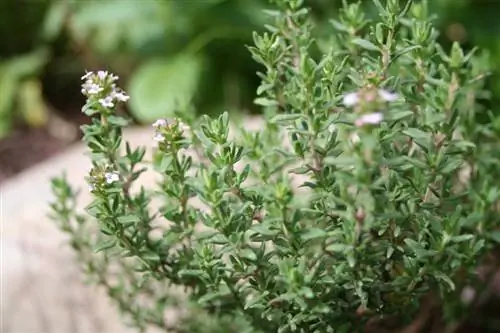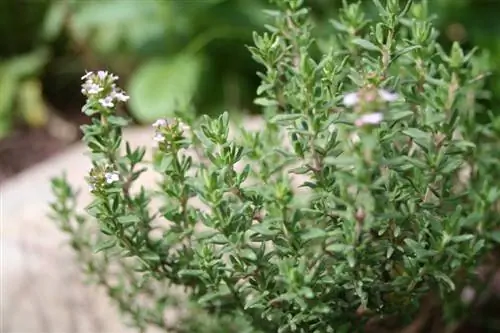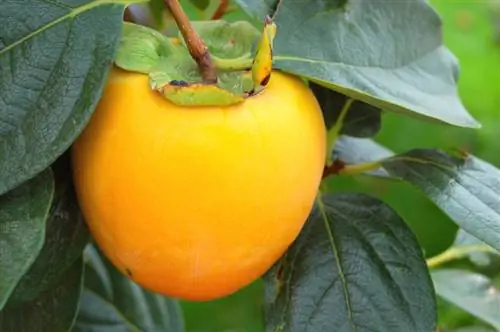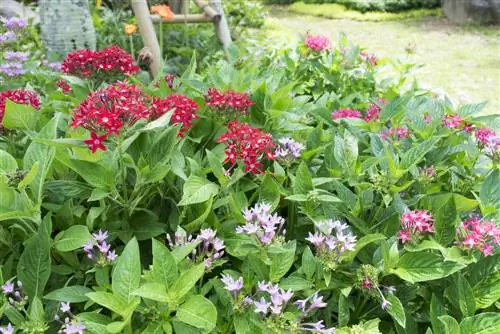- Author admin [email protected].
- Public 2023-12-16 16:46.
- Last modified 2025-06-01 06:02.
Quendel, beesweed, humility or garden thyme - the different varieties of thyme are known by many popular names. The spice and medicinal herb has also been cultivated in German-speaking countries since the 11th century; wandering monks of the Benedictine order brought it with them from Italy.

Where does thyme originally come from?
Thyme originally comes from the Mediterranean region and was already used in ancient Egypt for mummification and as a medicinal herb. It was spread in Europe by wandering Benedictine monks in the 11th century.
Thyme was already known to the Egyptians
The preservative effect of thyme (then known as “Tham”) was already used in ancient Egypt to prepare for mummification. The use of the plant as a medicinal herb was already known. In ancient Greece and the Roman Empire, thyme was also used to treat respiratory diseases and gastrointestinal complaints. Well-known authors such as Theoprastus, Dioscorides and the polymath Roman Pliny described the various types of use and preparation. In the 12th century, the healing Abbess Hildegard von Bingen also described thyme in her writings as a medicinal herb - in the late Middle Ages, the plant was also a widespread remedy in German-speaking countries.
More than 200 different species
In our country, common thyme, also known as garden thyme, is common in many gardens. However, the species is divided into over 200 subspecies, which not only grows naturally in the dry meadows of southern Europe, the maquis, but also thrives in the warmer climes of Central Europe. Probably the most important type of thyme is the real thyme (Thymus vulgaris, also known as Roman thyme); the following types are also often used:
- Lemon thyme (Thymus x citriodorus)
- Cascade thyme (Thymus longicaulis, particularly pretty in the balcony box)
- Sand thyme (Thymus serpyllum)
- Field thyme (Thymus pulegioides, also known as thyme)
Occurrence and distribution
Thyme grows wild mainly in the countries around the Mediterranean. Field thyme (Quendel), on the other hand, has its home in Central Europe and also grows in northern Italy, France and southern Switzerland. The commercially available plants mostly come from France, Spain, Turkey and Morocco, as well as some from Germany. Furthermore, the medicinal herb is widespread around the globe in growing areas with Mediterranean and continental climates.
Tips & Tricks
The gray cushion thyme (Thymus pseudolanoginosus), which is only about five centimeters high and develops pretty pink flowers, is particularly suitable for rock gardens as a ground-covering, hardy herb.






